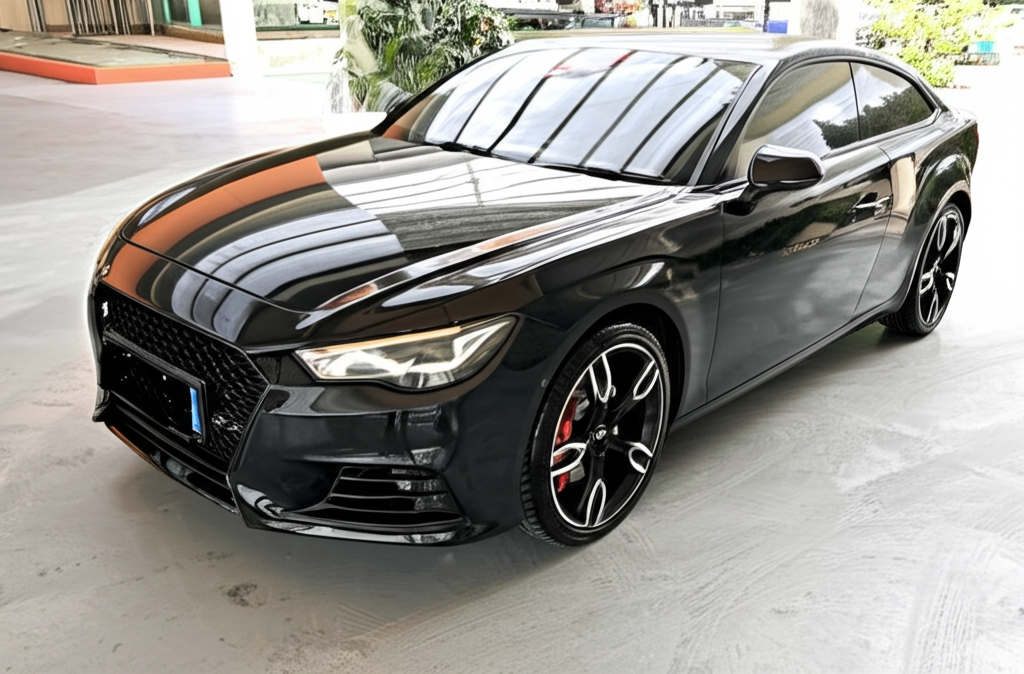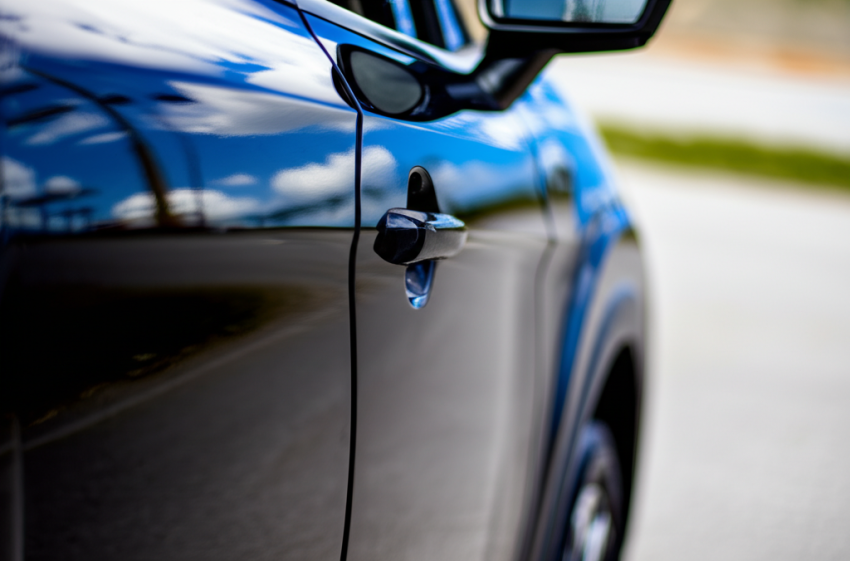Remember that exhilarating feeling? Driving your brand new car off the dealership lot in Thailand. The gleaming paint, the perfect finish… it’s a proud moment! But soon, a nagging worry creeps in. Bangkok’s notorious traffic, unexpected debris on highways, tight parking spots in malls, stray pebbles on provincial roads – the threats to your car’s pristine paintwork are everywhere. The thought of that first scratch, that sickening chip in the original factory paint, is enough to make any new car owner wince. You start parking further away, driving extra cautiously, constantly anxious. Is there a way to protect your investment and keep that “new car feeling” for longer? You’ve probably heard about Paint Protection Film, or PPF. But does it actually work, especially under the demanding conditions in Thailand? Is it just hype, or a genuinely worthwhile investment? Let’s dive deep, drawing from real-world experience.
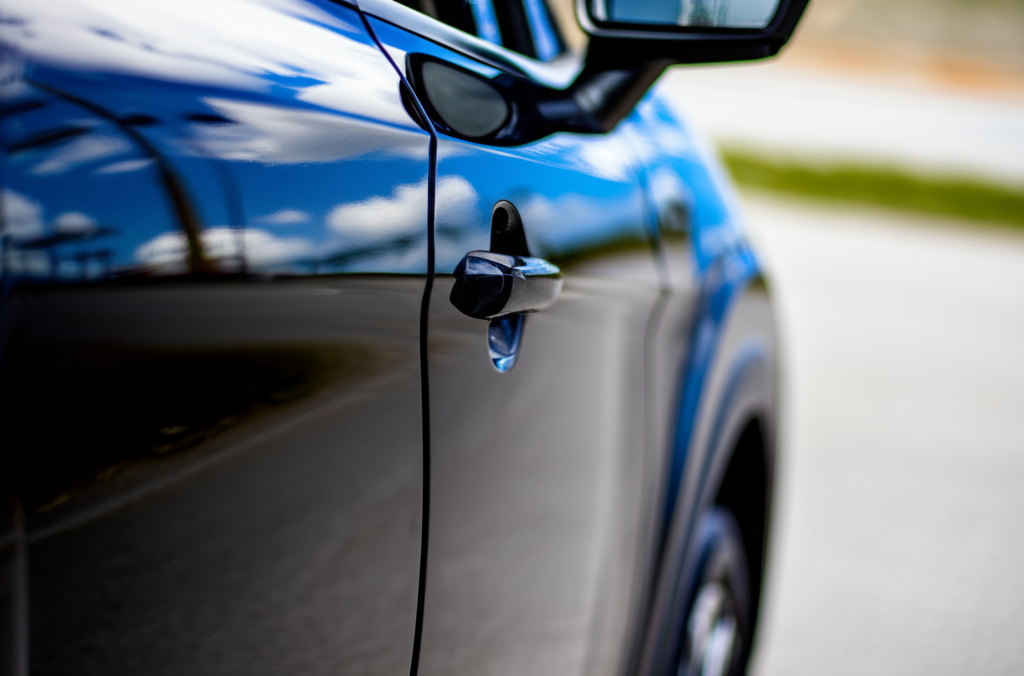
One Bangkok Driver’s PPF Journey: From Anxiety to Assurance
Meet Mr. Arnon, a proud owner of a new Honda Civic RS in Bangkok. Like many new car owners, he was initially thrilled but quickly became stressed about maintaining its flawless finish. “Navigating Sukhumvit during rush hour felt like a minefield,” he recalls. “Motorbikes squeezing past, tuk-tuks cutting in, delivery trucks kicking up stones… I was constantly worried about micro-scratches and swirl marks, especially on the deep black paint.” He researched options online, talked to fellow car enthusiasts, and kept hearing about PPF.
Skeptical but desperate to protect his investment, Arnon decided to invest in a full-front PPF application (bonnet, front bumper, fenders, headlights, side mirrors) from a reputable installer in the Lat Phrao area. The process took a couple of days, involving meticulous cleaning and precise application of a high-quality, clear urethane film. “Seeing them stretch and carefully apply the film was nerve-wracking, but the professionalism was reassuring,” he notes. The initial cost felt significant, adding to his new car expenses.
Fast forward two years. Arnon still navigates the challenging Bangkok traffic daily, takes occasional road trips upcountry, and parks in typical condo and mall car parks. How has the PPF held up? “Honestly, it’s been fantastic,” he beams. “There have been countless times I’ve heard pebbles ping off the bonnet on the highway, or found small scuffs near the door handles likely from parking lots. But when I wash the car, the paint underneath is perfect. The film took the hits.” He points to a barely visible mark on the fender film. “This happened last month – someone scraped against it lightly in a parking lot. The film scarred slightly, but the paint beneath? Untouched. That alone paid for itself in my mind, avoiding a costly repaint and the hassle.” The self-healing properties of his chosen film even made minor swirl marks disappear with the heat of the sun. His car, despite two years of active use, retains much of its original showroom shine on the protected areas.
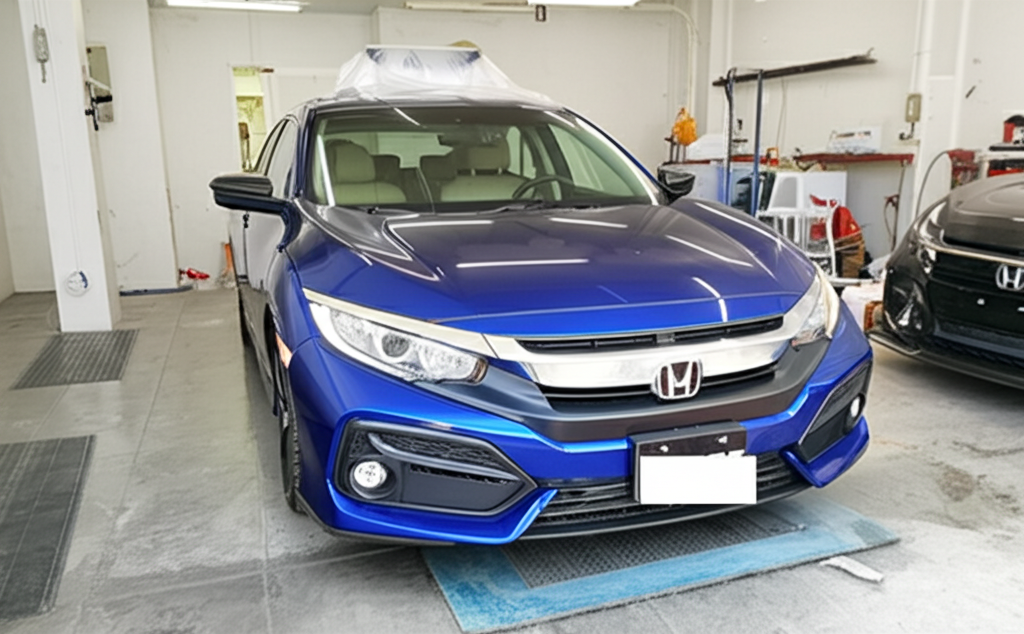
PPF vs. Colour Change Vinyl Wrap: Understanding the Difference
It’s easy to get confused between Paint Protection Film (PPF) and Colour Change Vinyl Wraps, as both are films applied to cars. However, their primary purposes and properties are very different. PPF is designed purely for protection, while vinyl wraps are primarily for changing the car’s appearance. Here’s a quick comparison relevant for Thai car owners concerned about paint preservation:
| Feature | Paint Protection Film (PPF) | Colour Change Vinyl Wrap |
|---|---|---|
| Primary Purpose | Protect original paint from physical damage (scratches, chips, stains) | Change the car’s colour and aesthetic style |
| Material | Thick, durable, transparent urethane | Thinner PVC (Polyvinyl Chloride) material |
| Thickness | Typically 6-14 mils (150-350 microns) | Typically 2-4 mils (50-100 microns) |
| Protection Level | High resistance against stone chips, scratches, swirl marks, bird droppings, bug splatter, chemical stains | Minimal protection against physical impacts; mainly protects against light scratches and UV fading |
| Self-Healing | Often features a self-healing top coat (minor scratches disappear with heat) | Generally does not self-heal |
| Appearance | Optically clear, virtually invisible; enhances gloss or offers a matte finish option | Available in countless colours, textures (gloss, matte, satin, chrome, carbon fiber look) |
| Durability / Lifespan (Thailand Climate) | Typically 5-10 years, depending on quality and maintenance (UV resistance is key) | Typically 2-5 years, can be shorter in harsh sun; colours may fade over time |
| Cost (Full Car Estimate) | Higher (e.g., ฿50,000 – ฿150,000+) | Lower to Moderate (e.g., ฿30,000 – ฿80,000+) |
| Removal | Generally safe for factory paint if removed correctly by professionals | Can potentially damage paint if low-quality film is used, improperly installed, or removed incorrectly, especially after prolonged sun exposure |
For a new car owner in Thailand primarily concerned about preserving the original paint from physical damage caused by road conditions and tight spaces, PPF is the superior choice due to its thickness, durability, and protective qualities. While a vinyl wrap offers some minor protection, it’s not designed to withstand significant impacts like PPF can.
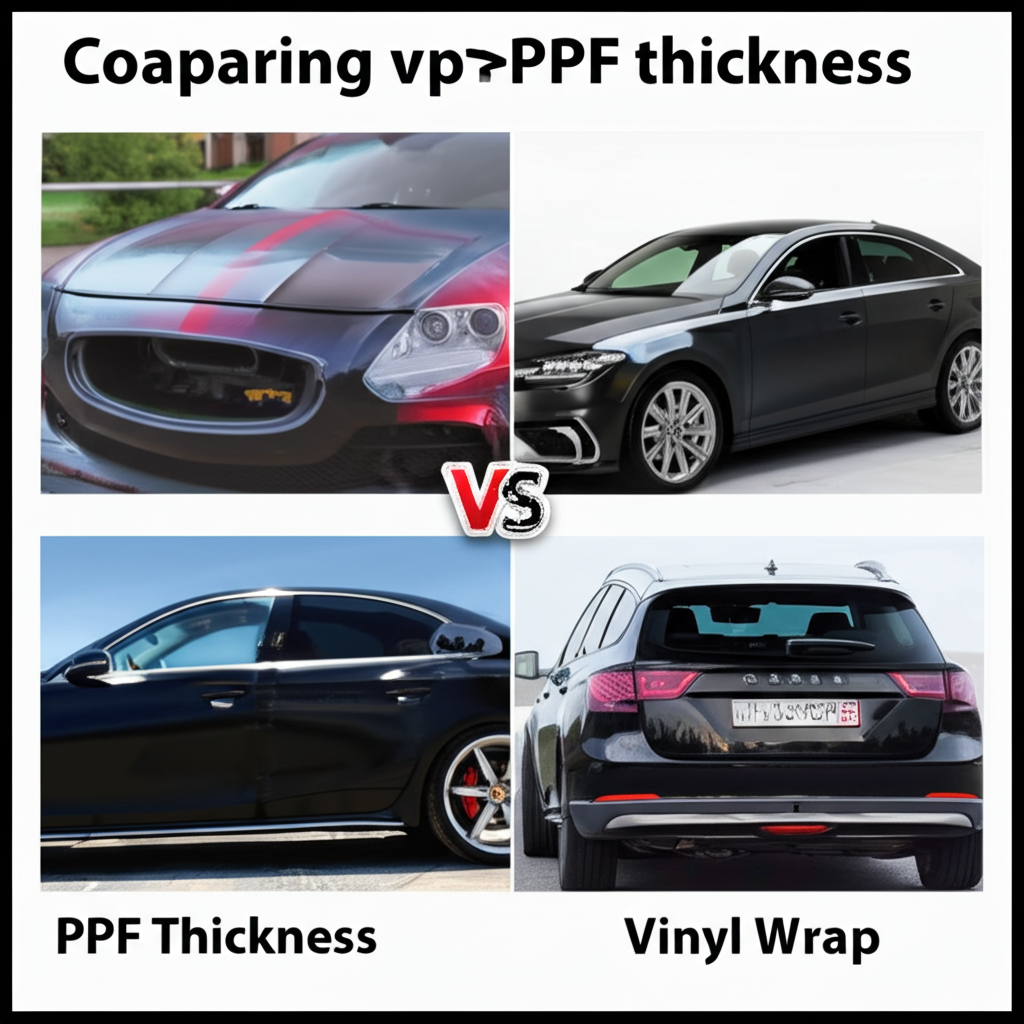
Peace of Mind: What Other Thai Drivers Say After Using PPF
Arnon’s experience isn’t unique. Many Thai car owners who have invested in PPF share similar sentiments:
- Ms. Pim, Toyota Fortuner Owner (Chiang Mai): “Driving mountain roads means lots of loose gravel. Before PPF, every trip left me anxious checking the front bumper for chips. Since installing PPF a year ago, that stress is gone. I wash the car, and it looks good as new underneath. The peace of mind is priceless.”
- Mr. Tanawat, BMW 3 Series Owner (Phuket): “Living near the coast, bird droppings and salt spray were a constant battle. My previous car’s paint suffered. With PPF on my new BMW, cleaning is easier, and I don’t worry about etching anymore. Plus, the gloss finish looks amazing. It felt expensive initially, but seeing the paint stay perfect makes it worth every Baht.”
- Mrs. Siriporn, MG ZS EV Owner (Bangkok Suburbs): “As a first-time EV owner, I wanted to protect my investment fully. The silent drive is great, but you notice every little stone hitting the car! Full front PPF was one of my first additions. After 18 months, zero regrets. Minor scuffs from parking have vanished thanks to the self-healing. It just feels better knowing the original paint is safe.”
The common theme? A significant reduction in anxiety about paint damage, replaced by confidence and enjoyment in driving their cars, knowing the original finish is preserved beneath a durable, invisible shield.

Ready to Protect Your New Ride?
Your new car represents a significant investment and a source of pride. Don’t let the daily grind of Thai roads diminish its beauty or your enjoyment. Investing in high-quality Paint Protection Film is investing in long-term peace of mind, preserving your car’s aesthetic appeal, and potentially enhancing its resale value. Stop worrying about every pebble and careless door opening. Drive confidently, knowing your paintwork is shielded by the best protection available.
Want to learn more about the best PPF options for your specific car model and driving habits in Thailand? Get expert advice and a personalized quote:
📱 Want to learn more about car wrap & paint protection?
Feel free to reach us on LINE:

🌐 Official Website: https://tpuwraps.com
Frequently Asked Questions (FAQ) about PPF in Thailand
- Q: How much does PPF cost in Thailand?
- A: Costs vary widely based on film quality (brand, thickness, self-healing properties), coverage area (full car, full front, partial front), vehicle size, and installer expertise. Expect prices ranging from ฿15,000-฿30,000 for partial front coverage to ฿50,000-฿150,000+ for a full car on premium films.
- Q: How long does PPF last in the Thai climate?
- A: Quality PPF from reputable brands is designed to withstand strong UV radiation and heat. Most top-tier films come with warranties ranging from 5 to 10 years against yellowing, cracking, or bubbling when properly maintained.
- Q: Does PPF require special maintenance?
- A: Not really special, but proper care extends its life. Regular washing (avoid high-pressure jets directly at film edges), using pH-neutral shampoos, and occasionally applying a sealant designed for PPF is recommended. Avoid abrasive polishes or waxes.
- Q: Will PPF damage my original paint upon removal?
- A: If a high-quality film is professionally installed and removed, it should not damage the underlying factory paint. Issues usually arise from low-quality films, improper installation, or attempting removal without the correct techniques, especially on repainted surfaces.
- Q: Will the PPF turn yellow over time?
- A: Older generations of PPF were prone to yellowing. However, modern, high-quality urethane films have advanced UV inhibitors to prevent yellowing and maintain optical clarity for years, backed by manufacturer warranties.
The Final Verdict: An Investment in Preservation and Peace
So, is Paint Protection Film really useful for a new car owner in Thailand? Based on the experiences of drivers navigating everything from congested city streets to unpredictable highways, the answer is a resounding yes – especially if you value your car’s appearance and hate the thought of paint damage. It’s more than just a film; it’s a shield against the inevitable hazards of driving, preserving that showroom shine and your peace of mind. While the upfront cost is undeniable, consider it an investment in maintaining your car’s condition, potentially saving money on future paint repairs, and retaining higher resale value. For those who truly care about keeping their car looking its best despite the challenging Thai environment, PPF proves its worth time and time again.
Don’t wait for that first heartbreaking scratch. Protect your pride and joy today.
